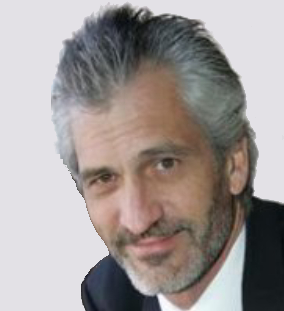
By Bob Brown
The problem facing many strategic high growth markets that leverage real time video is no optical system or camera is optimized to deliver high-quality actionable video in every environmental condition. There are many applications that can benefit from Instant Visual Clarity in compromised video streams including: Security and Surveillance, Artificial Intelligence, Computer and Machine Vision, Autonomous Vehicles, Urban Traffic Monitoring, Smart Cities, and Video Analytics.
The quality of the video captured from all optical systems is compromised by a variety of factors. Even the most advanced wide-dynamic range, high-definition, thermal or infrared cameras are restricted by optical physics and environmental challenges.
The following conditions have the most significant effects on capturing high quality, actionable video:
Adverse Lighting caused by night; low light; backlight and extreme contrast like sun glare; headlights; and infrared imaging. These are all challenging environments that distress the quality of video.
These conditions significantly impact the image quality taken by all camera systems rendering them ineffective and incapable of delivering meaningful and actionable video.
Extreme weather conditions impact the visibility of all camera systems. The image quality from cameras operated outdoors can be severely compromised by the effects of severe rain, snow, dense fog, mist, or haze that ends up removing any chance of capturing actionable data.
Airborne particles in the environment can also negatively impact the quality of the imagery delivered by the camera. Representative challenges in this area include the impact of sandstorms, smoke, smog, dirt, and dust – all of which degrade visibility and the camera?s ability to capture quality video.
The demand for Instant Visual Clarity is rapidly increasing throughout global markets. Real-time, actionable video requirements are expanding across all industries including: government, military, law enforcement, healthcare, maritime, industrial, transportation, agriculture, retail, energy, and public utilities.
Governments and industries are committing significant additional resources to security and surveillance.
Governments across the world are investing in high quality video surveillance systems as part of their border control, security, and anti-terrorism infrastructure. All security and surveillance applications can instantly benefit from instantaneous visual clarity.
Artificial Intelligence (AI) is intelligence demonstrated by machines: any device that perceives its environment and takes action that maximizes its chance of successfully attaining its goal. AI problems include reasoning, planning, learning, perception, and the ability to move and manipulate objects.
For example, AI enables autonomous planning or calculations for robotic systems to maneuver through an environment. Information about the environment is being provided by computer vision systems, acting as a vision sensor for the robot. Computer Vision addresses how computers can be utilized to derive a high-level understanding (from digital images or video) to automate tasks and enhance the performance of the organic, human visual system and analytical process.
Computer Vision is concerned with the theory behind artificial systems that extract information from images. Computer vision systems that are leveraging ProHawk can extract substantially better data for scene reconstruction, event detection, video tracking, object recognition, 3D pose estimation, learning, indexing, and motion estimation.
The growth of the market is mainly driven by the increasing adoption of computer vision in autonomous and semi-autonomous vehicles, military, industrial, and consumer drones and the rising adoption of Industry 4.0 manufacturing automation and data exchange.
Autonomous vehicles employ embedded software, sensors, and communications systems trending towards advanced Artificial Intelligence (AI) technology. True level 5 autonomous driving, full autonomy in any and all conditions, will not be achieved without system such as ProHawk technology.
Elon Musk, CEO of a leading autonomous vehicle company, Tesla, has said publicly, ?Once you solve cameras for vision, autonomy is solved: if you don?t solve vision, it?s not solved?You can absolutely be superhuman with cameras.?
Successful implementation of smart city projects heavily depends on technologies – data communications, cloud, mobility, and sensors that seamlessly tie together to form an IoT ecosystem. Typical smart city projects target traffic flow optimization, public safety violence eradication, efficient street light utilization, and parking. Smart cities are enabled by smart cameras that will make sense of what they see in real time.
Governments, industries, and commercial organizations all use advanced video analytics for security to improve operational efficiency. Instant Visual Clarity is essential to key, common video analytics uses including License Plate Recognition, Object Recognition, and Facial Recognition.
About The Author
Bob Brown is CEO and CTO of Prohawk Technology Group, the leading provider of Instant Visual Clarity solutions. Bob has over 30 years of experience in software and systems; he has an extensive background in storage management, network management, internet collaboration, telecommunications, and computer vision.

